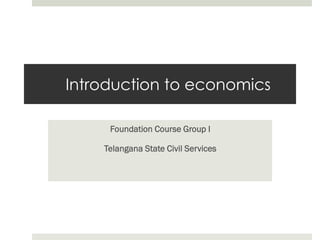The document provides an introduction to key economic concepts including:
- Adam Smith is considered the father of modern economics and advocated for free markets with minimal government interference.
- Economics studies how scarce resources are allocated to meet infinite wants. It examines rationing systems like planned and free market economies.
- Countries face an economic problem of unlimited wants and scarce resources, which requires choices between alternatives.
- Microeconomics focuses on individual consumers and firms, while macroeconomics looks at aggregate markets, growth, inflation, unemployment, and trade.





































